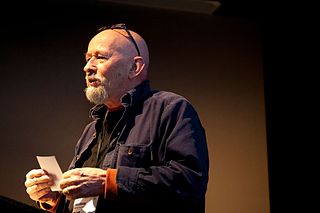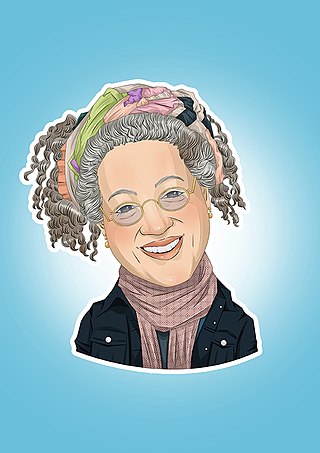A letterer is a member of a team of comic book creators responsible for drawing the comic book's text. The letterer's use of typefaces, calligraphy, letter size, and layout all contribute to the impact of the comic. The letterer crafts the comic's "display lettering": the story title lettering and other special captions and credits that usually appear on a story's first page. The letterer also writes the letters in the word balloons and draws in sound effects. Many letterers also design logos for the comic book company's various titles.

Milton Glaser was an American graphic designer, recognized for his designs, including the I Love New York logo; a 1966 poster for Bob Dylan; the logos for DC Comics, Stony Brook University, Brooklyn Brewery; and his graphic work on the introduction of the iconic 1969 Olivetti Valentine typewriter.

Ephram Edward Benguiat was an American type designer and lettering artist. He designed over 600 typefaces, including Tiffany, Bookman, Panache, Souvenir, Edwardian Script, and the eponymous Benguiat and Benguiat Gothic.
Robert M. Peak was an American commercial illustrator. He is best known for his developments in the design of the modern film poster.

Seymour Chwast is an American graphic designer, illustrator, and type designer.

Lettering is an act or result of artfully drawing letters, instead of writing them simply. Lettering is considered an art form, where each letter in a phrase or quote acts as an illustration. Each letter is created with attention to detail and has a unique role within a composition. Lettering is created as an image, with letters that are meant to be used in a unique configuration. Lettering words do not always translate into alphabets that can later be used in a typeface, since they are created with a specific word in mind.
Rian Hughes is a British graphic designer, illustrator, type designer, comics artist and novelist.

Gudrun Zapf von Hesse was a German book-binder, calligrapher and typographer.
Ikko Tanaka was a Japanese graphic designer.
Ken Lopez is a letterer and logo designer for the comic book industry. A pioneer of computer lettering, Lopez designed the fonts for DC Comics's in-house lettering unit, and is currently DC's art director for lettering and its cover editor.
Alan Jay Peckolick was an American graphic designer, painter, and photographer.
Rick Cusick is an American lettering artist, calligrapher, type designer and book designer.

Jim Parkinson is an American type designer in Oakland, California.

Charles Buckles Falls, also known as C. B. Falls, was an American artist and member of the Decorative Designers, most known for his illustrations and writings. He is the author and illustrator of several books, including The ABC Book. He is also known for his World War I poster advertisements, such as Books Wanted.

Gail Anderson is an American graphic designer, writer, and educator known for her typographic skill, hand-lettering and poster design.

A display typeface is a typeface that is intended for use in display type at large sizes for titles, headings, pull quotes, and other eye-catching elements, rather than for extended passages of body text.
Zavier Leslie Cabarga, popularly known as Leslie Cabarga, is an American author, illustrator, cartoonist, animator, font designer, and publication designer. A participant in the underground comix movement in the early 1970s, he has since gone on to write and/or edit over 40 books. His art style evokes images from the 1920s and 1930s, and over the years Cabarga has created many products associated with Betty Boop. His book The Fleischer Story in the Golden Age of Animation, originally published in 1976, has become the authoritative history of the Fleischer Studios.
Raul Valdes Gonzalez, known by his friends and professionally as Raupa, was born in Havana, Cuba on March 4, 1980. He is an independent artist and has created images of events and institutions of great importance to the Cuban culture. Graphic design and film “motion graphics” are his concentration, produced through the language of illustration, animation and video.
Antonio "Tony" DiSpigna is an American type designer and graphic designer.

Franzisca Baruch was a German–Israeli graphic designer. She is known for designing Hebrew fonts, the cover of the first Israeli passport, the emblem of Jerusalem, and the logo of the Ha'aretz newspaper.











